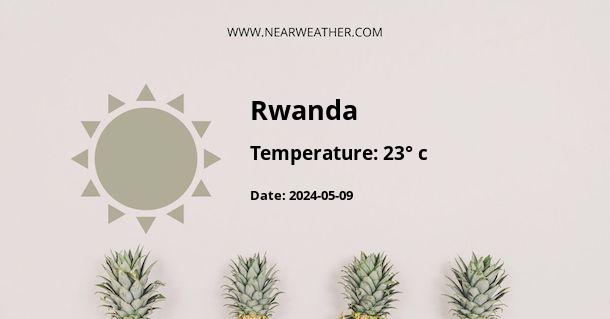Overview of the Republic of Rwanda
The Republic of Rwanda, often simply referred to as Rwanda, is a landlocked country located in East-Central Africa. It's bordered by Uganda, Tanzania, Burundi, and the Democratic Republic of Congo. The country is relatively small in size but boasts a rich cultural heritage and a diverse ecosystem that varies from savannahs in the east to mountainous terrains in the west. Rwanda's geographical location and diverse topography significantly influence its climate and weather patterns.
Climate and Weather in Rwanda
Rwanda’s weather is often referred to as the "land of eternal spring" due to its mild temperatures year-round. It is located just south of the Equator, which accounts for its tropical savannah climate. However, the country's high altitude tempers this tropical climate, resulting in cooler temperatures than typically expected in equatorial countries.
Annual Climate Breakdown
| Season | Months | Temperature Range (°C) | Precipitation |
|---|---|---|---|
| Long Dry Season | June - September | 20 - 30 | Low |
| Short Rainy Season | October - November | 19 - 28 | High |
| Short Dry Season | December - February | 19 - 29 | Low |
| Long Rainy Season | March - May | 19 - 28 | Very High |
Temperature
Rwanda experiences moderate temperatures throughout the year, with the average daytime temperature around 24-27°C. Nighttime temperatures drop considerably, often falling to around 15°C. The hottest months are typically August and September, just before the short rainy season.
Precipitation
Rwanda experiences two rainy seasons and two dry seasons each year. The long rainy season spans from March to May, with the highest rainfall recorded in April. The short rainy season occurs between October and November. The country's rainfall is abundant, with the annual precipitation averaging 1100mm.
Humidity
Humidity levels in Rwanda can be quite high, particularly during the rainy seasons. However, the elevated altitudes help to mitigate the discomfort often associated with high humidity.
Climate Influences
Rwanda's climate is primarily influenced by its equatorial location and high altitude. The country's varying altitudes, ranging from 950m to 4,507m above sea level, account for its diverse weather conditions and microclimates.
Regional Weather Variations
The weather and climate can vary significantly across Rwanda due to its diverse topography. For instance, the western part of the country, which is dominated by the Albertine Rift mountains, is cooler and receives more rainfall than the eastern savannah region.
Western Rwanda
Western Rwanda is home to a range of high-altitude mountains and volcanoes, including the Virunga Mountain range. The region experiences lower temperatures and higher rainfall than the rest of the country. The average annual temperature is around 19°C, and the annual rainfall can exceed 1500mm.
Eastern Rwanda
The eastern part of Rwanda is predominantly flat, with savannah and marshland landscapes. The region is warmer and drier than the western region. The average annual temperature is around 21°C, and it receives roughly 900mm of rainfall each year.
Conclusion
Despite its small size, Rwanda's climate is highly varied due to its diverse topography and high altitude. The country enjoys a mild tropical climate year-round, with abundant rainfall and moderate temperatures. Its unique weather patterns and diverse ecosystems make it a fascinating place for both residents and tourists.
References
The information in this article is primarily sourced from the Rwanda Meteorological Agency and the World Meteorological Organization (WMO).
A - Rwanda's Latitude is -2.000000 & Longitude is 30.000000.
A - Weather in Rwanda is 26° today.
A - Climate Conditions in Rwanda shows scattered clouds today.
A - Humidity in Rwanda is 44% today.
A - Wind speed in Rwanda is 11.12 km/h, flowing at 40° wind direction. today.
